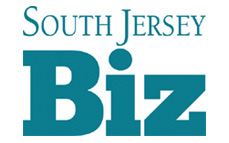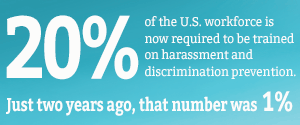
When The Princeton Review released the 2025 edition of its College Hopes & Worries Survey on March 4, it showed that 73% of the 9,317 respondents comprising future college students and their parents reported "high" or "very high" stress over the admissions process—the highest percentage in the survey’s 23-year history.
Contributing to the concerns of nearly three in four individuals are factors like the financial strain of all-time-high soaring tuition costs, with the survey indicating that 98% of families plan to apply for financial aid and 38% indicating that student debt is their biggest worry. Additionally, 48% noted that monetary aid is "extremely" necessary in realizing their dreams of higher education, while 26% worry about of being accepted to their dream school but not being able to afford it.
These concerns and plenty of others are all realties that New Jersey’s colleges and universities are both keenly aware of and working to overcome. As engines of economic growth, both in terms of the financial gain they generate for their communities and the alumni who contribute to the labor pool, those schools and their decision-makers recognize the role they play in ensuring that the next generation of professionals is a well-educated, adaptable and future-ready one, a workforce that’s ready to meet the unknown challenges of the future and contribute to the community they choose to call home.
“There’s a greater focus on outcome rather than input today,” notes Rowan College at Burlington County (RCBC) President Dr. Michael Cioce. “We have advisory panels, and they’ll tell us what soft skills students are lacking so we can infuse them into the classroom—like if people need to be more comfortable with public speaking, we can have some sort of speaking requirement on the [general education] side, or if our industry partners and local business communities tell us what certifications or skills or credentialing graduates should have.”
To Joe Bertolino, Ed.D., president of Stockton University, the college’s most pressing concern and prevailing priority can be distilled into three things: “Access, access and access.”
“It’s all about access and opportunity,” he affirms. “Our job is to create a culture of opportunity. All of the conversations—whether we’re talking about finances or budgets or the executive orders or the curriculum—in my opinion, directly link to access because that is the starting point.”
Affordability remains a key issue, and higher education has responded to prospective students’ financial difficulty with an array of solutions, from offering online classes and expanding credit-transfer opportunities to providing lower-cost textbooks and prioritizing need-based grants. Of course, positioning a college education so more students can seize upon an avenue to a degree is a mutually beneficial development, as schools need a student body to justify their operational costs.
Colleges and universities are posed to tackle “the enrollment cliff,” a drop in applicants expected to be seen next year. It’s the delayed consequence of the Great Recession, the economic uncertainty and job instability that sent birth rates plummeting in a generation that’s about to enter its higher-education years. In New Jersey, overall post-secondary enrollment among public, private and religious schools was about 490,000 in the 2022-’23 school year, a 13% decline from the 2011-12 school year’s 565,000 collective student body. Pair that with fears of mounting student debt and prospective students questioning whether they want to meet adulthood in a financial hole, and it’s a significant cause for concern for area schools.
“I think the other most pressing concern right now, in addition to access, is articulating higher education’s value proposition,” Dr. Bertolino continues. “Individuals are questioning our value and the return on investment, even though all of the data shows that for individuals, for an industry, for an economy, for growth and innovation, higher education matters personally, professionally and economically. And, from a social-structure perspective, we—meaning the entirety of education folk—need to do a better job of telling our story through data and personal anecdotes.”
The recent high school graduate who heads off to college in a seamless transition from secondary to post-secondary education might still be the predominant student on campus, but the fabric of a college community has undergone some changes in recent years. Today’s student body includes a rising number of individuals with rich backgrounds, who are trailblazers in their families and balancing adult-sized responsibilities: first-generation college attendees; first-generation immigrants and those whose first language isn’t English; full- and part-time workers either already on a career path or paying their own way; active military members and veterans; those who are financially supporting older generations, siblings or children of their own; and returning students who are either finishing coursework they began years ago or supplementing their professional development with correlating classes.
South Jersey benefits from being in close proximity to schools that recognize there’s no one-size-fits-all approach to higher education. The ongoing, proactive development of RCBC offers a deeply individualized springboard toward the degrees that typically open doors to greater opportunities for upward socioeconomic mobility, focusing on affordability and flexibility. Cost-saving measures like the 3+1 program allows students to “prepare for the future without crippling college debt” while working toward their associate and bachelor’s degrees.
And, much like four-year colleges and “without the stigma of 20 years ago,” RCBC also offers students a direct pathway to hands-on, career-focused opportunities that develop the skills they’ll need as they join the workforce.
“All of our students have opportunities that are either generic, like in the customer-service space, or are major-specific because some students know exactly what they want to be,” says Dr. Cioce. “When you look at our health care partners and health care programs, we have humungous partners in Virtua, Cooper, Deborah, and Jefferson … Their clinical placements are embedded in the curriculum. Before they graduate, they actually spend time on hospital floors and are actually drawing blood. Not every program mirrors that, but we’re trying to make sure that every student can have an experiential opportunity.”
In the 35 years he’s been in education and his third college presidency, Dr. Bertolino has seen the world of academia shift along with modern expectations, philosophies and perspectives. He notes that today’s colleges aren’t just taking responsibility for their students’ success in the classroom: They recognize how those pupils are more than letter grades, attendance records and their areas of study, and that a truly well-rounded young adult is the result of all-encompassing development—and that it’s higher education’s responsibility to lay a strong foundation for current students and future graduates alike.
“There has been a significant shift in many ways in the demands that students have across all of higher education, especially when you’re educating first-generation college students or students from working-class families where their needs are greater,” says Dr. Bertolino. “For example, 30 years ago, I would have said that students go to class, they’re in their activities, they have a good time, they graduate, they get a good job—then, we weren’t talking as much about issues like working while in school, mental health issues, food insecurity, housing insecurity. All these conversations about stressors were not taking place in a robust way, so I think what has changed is the needs of the students and institutions providing an array of wraparound services, not just education.”
Ensuring students have all the support they need to thrive academically and beyond is an ever-changing pursuit of meeting students where they are, not just because it has to suit students representing all walks of life but because the long-term emotional and educational disruption of COVID is still perniciously lingering and interfering with student success, necessitating a new way to grapple with an unprecedented academic disruption.
“We found that some of our numbers were trending the wrong way when we looked at our core English and math education, so we had an entire redesign of our math curriculum,” says Dr. Cioce. “We even put our tutoring services where students will actually interact with them, not buried away in some remote part of campus.”
While leaders in higher education are proactively championing the cause of increased accessibility through eliminating the barriers that stand between a promising student and a life-changing college diploma, it’s not just dedicated educational professionals who are focused on empowering both present and future post-secondary students.
A number of bills that aim to improve students’ chances of connecting with the tools they need to succeed are making their way through state legislature. One assembly bill, A-5212, aims to expand the social services at community colleges that encourage holistic student support, recognizing that increasing access to food assistance, housing support and childcare subsidies while streamlining applications for the likes of Supplemental Nutrition Assistance Program (SNAP) and Temporary Assistance for Needy Families (TANF) similarly increases recipients’ chances for academic success.
Another bill package sets its sights on positioning students for optimal success, which the Assembly Higher Education Committee advanced last month. That package includes: A-5211, which codifies the New Jersey Pathways to Career Opportunities Initiative, drawing upon the power of secondary and post-secondary education and a partnership with the New Jersey Business & Industry Association to cultivate a network with labor unions and other organizations to offer training, apprenticeships and professional development; and A-5213, which would strengthen the collaboration workforce development boards and community colleges.
Working with area businesses and professional organizations helps higher education meet the needs of a workforce that includes nascent and emerging industries still identifying what their current and anticipated talent demands are, as well as zero in on those professions facing critical shortages that they can help direct a new workforce toward—all while also helping young adults develop the soft skills befitting a professional setting as they transition from higher education’s training to a worksite’s application of acquired knowledge as they settle into roles that not only contribute to their team’s success but also benefit the community they serve.
“We know that in South Jersey, some of our communities are challenged, and if you want those communities to thrive and to be able to support themselves and their families, education becomes key,” Dr. Bertolino says. “The strength of the economy, the innovation of the tax base, the employers, the employees, all of those are reasons to advocate for higher education. But, most importantly, it’s the right thing to do: If you want folks to participate and be engaged citizens, and you want folks to care for and take care of one another and contribute to their community, then we need to be willing to make an investment in their future.”
Click here to subscribe to the free digital editions of South Jersey Biz.
To read the digital edition of South Jersey Biz, click here.
Published (and copyrighted) in South Jersey Biz, Volume 15, Issue 3 (March 2025).
For more info on South Jersey Biz, click here.
To subscribe to South Jersey Biz, click here.
To advertise in South Jersey Biz, click here.








